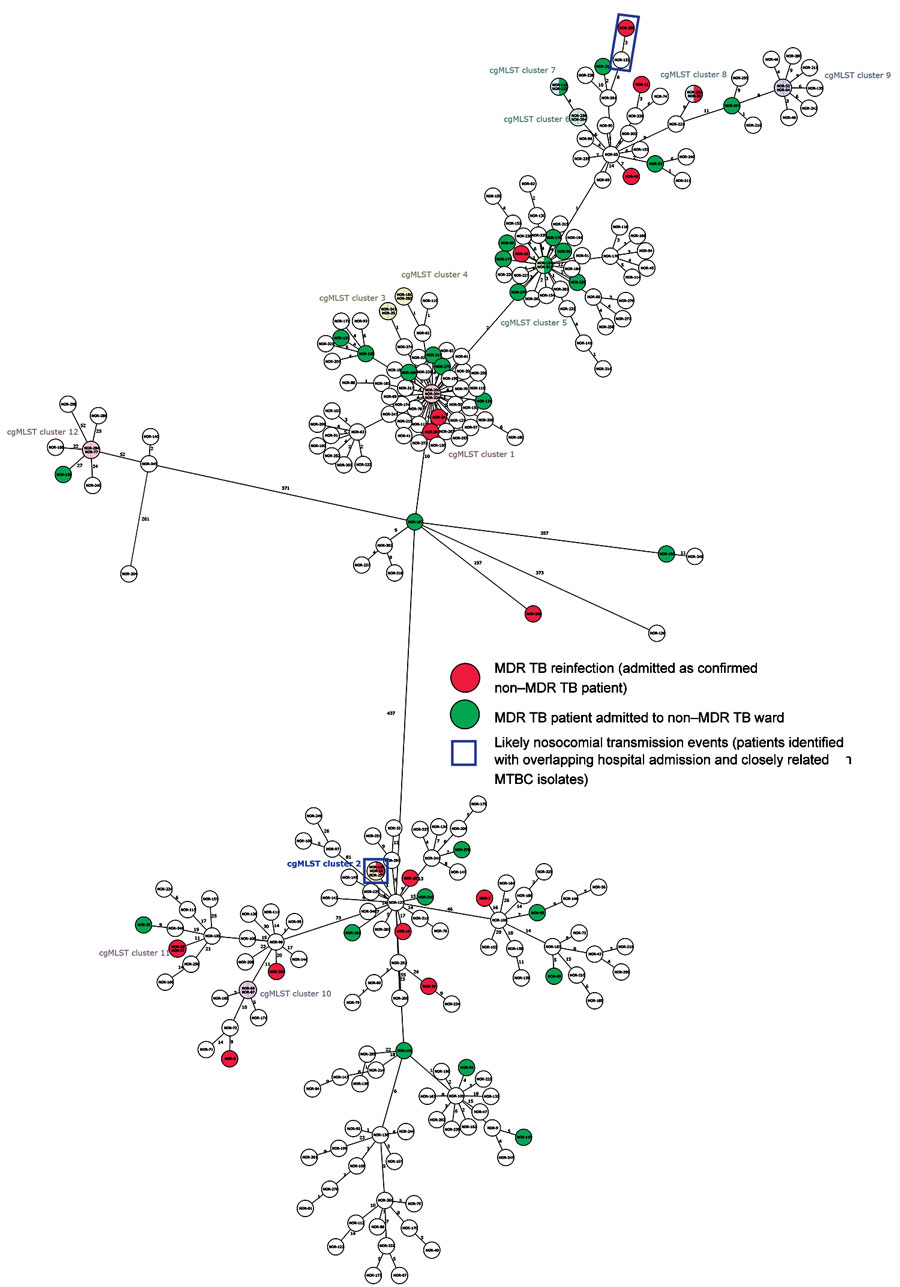Volume 29, Number 5—May 2023
Dispatch
Limited Nosocomial Transmission of Drug-Resistant Tuberculosis, Moldova
Figure 2

Figure 2. Phylogenetic network representing the genomic relatedness of all patient isolates in study of limited nosocomial transmission of drug-resistant tuberculosis, Moldova. Network is based on a core genome multilocus sequence type analysis. Pink indicates patients who acquired MDR TB, green indicates MDR TB patients initially admitted to a non–MDR TB ward; blue boxes indicate identified likely nosocomial transmission events. MDR, multidrug-resistant; MTBC, Mycobacterium tuberculosis complex; TB, tuberculosis.
1These first authors contributed equally to this article.
Page created: March 17, 2023
Page updated: April 19, 2023
Page reviewed: April 19, 2023
The conclusions, findings, and opinions expressed by authors contributing to this journal do not necessarily reflect the official position of the U.S. Department of Health and Human Services, the Public Health Service, the Centers for Disease Control and Prevention, or the authors' affiliated institutions. Use of trade names is for identification only and does not imply endorsement by any of the groups named above.